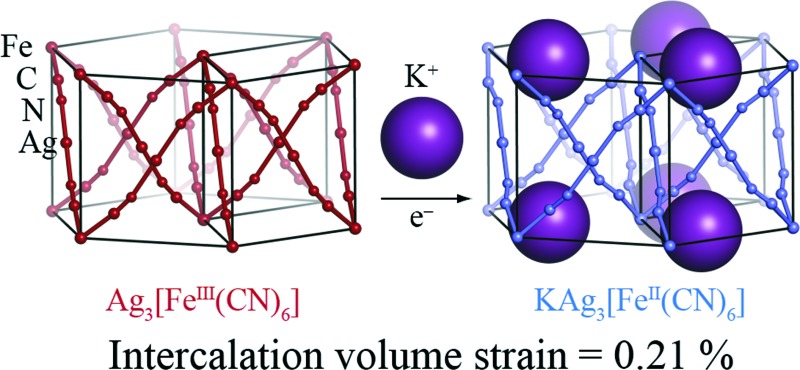- Record: found
- Abstract: found
- Article: found
Zero-strain reductive intercalation in a molecular framework†
research-article

Joshua A. Hill
a ,
Andrew B. Cairns
a ,
Jared J. K. Lim
a ,
Simon J. Cassidy
a ,
Simon J. Clarke
a ,
Andrew L. Goodwin
a
,
16 January 2015
Read this article at
There is no author summary for this article yet. Authors can add summaries to their articles on ScienceOpen to make them more accessible to a non-specialist audience.
Abstract

Abstract
Reductive intercalation of potassium within the molecular framework Ag 3[Fe(CN) 6] gives rise to a volume strain that is an order of magnitude smaller than is typical for common ion-storage materials. We suggest that framework flexibility might be exploited as a general strategy for reducing cycling strain in battery and ion-storage materials.
Related collections
Most cited references56
- Record: found
- Abstract: found
- Article: found
Rapid planetesimal formation in turbulent circumstellar discs
- Record: found
- Abstract: found
- Article: not found
High-performance lithium-ion anodes using a hierarchical bottom-up approach.
A Magasinski, P. Dixon, B. Hertzberg … (2010)
- Record: found
- Abstract: found
- Article: not found
Versatile Photocatalytic Systems for H2 Generation in Water Based on an Efficient DuBois-Type Nickel Catalyst
Manuela Groß, Anna Reynal, James R. Durrant … (2013)
Author and article information
Notes
†Electronic supplementary information (ESI) available: Synthesis, experimental methods, and sample characterisation; X-ray powder diffraction refinement details. See DOI: 10.1039/c4ce02364a